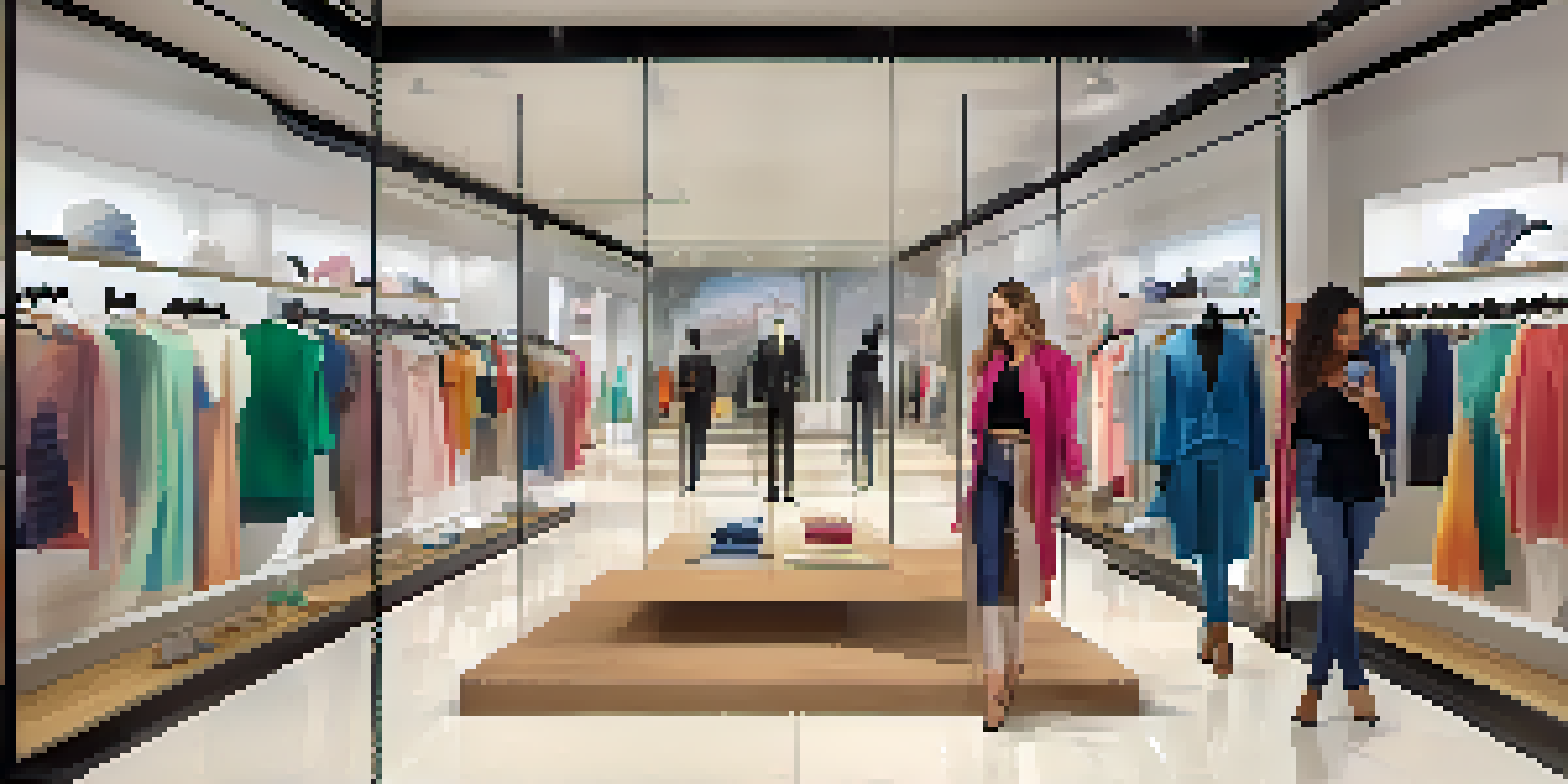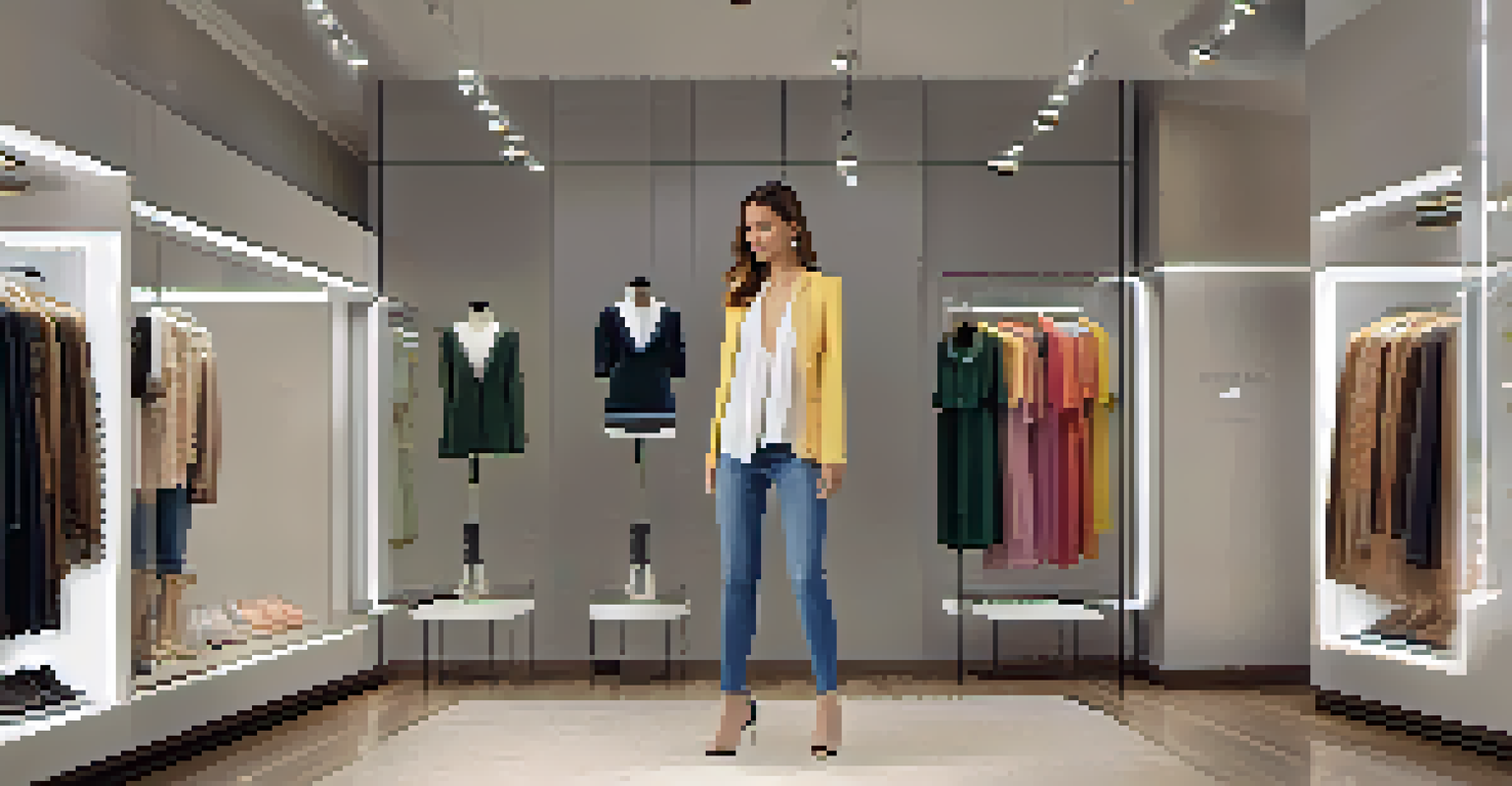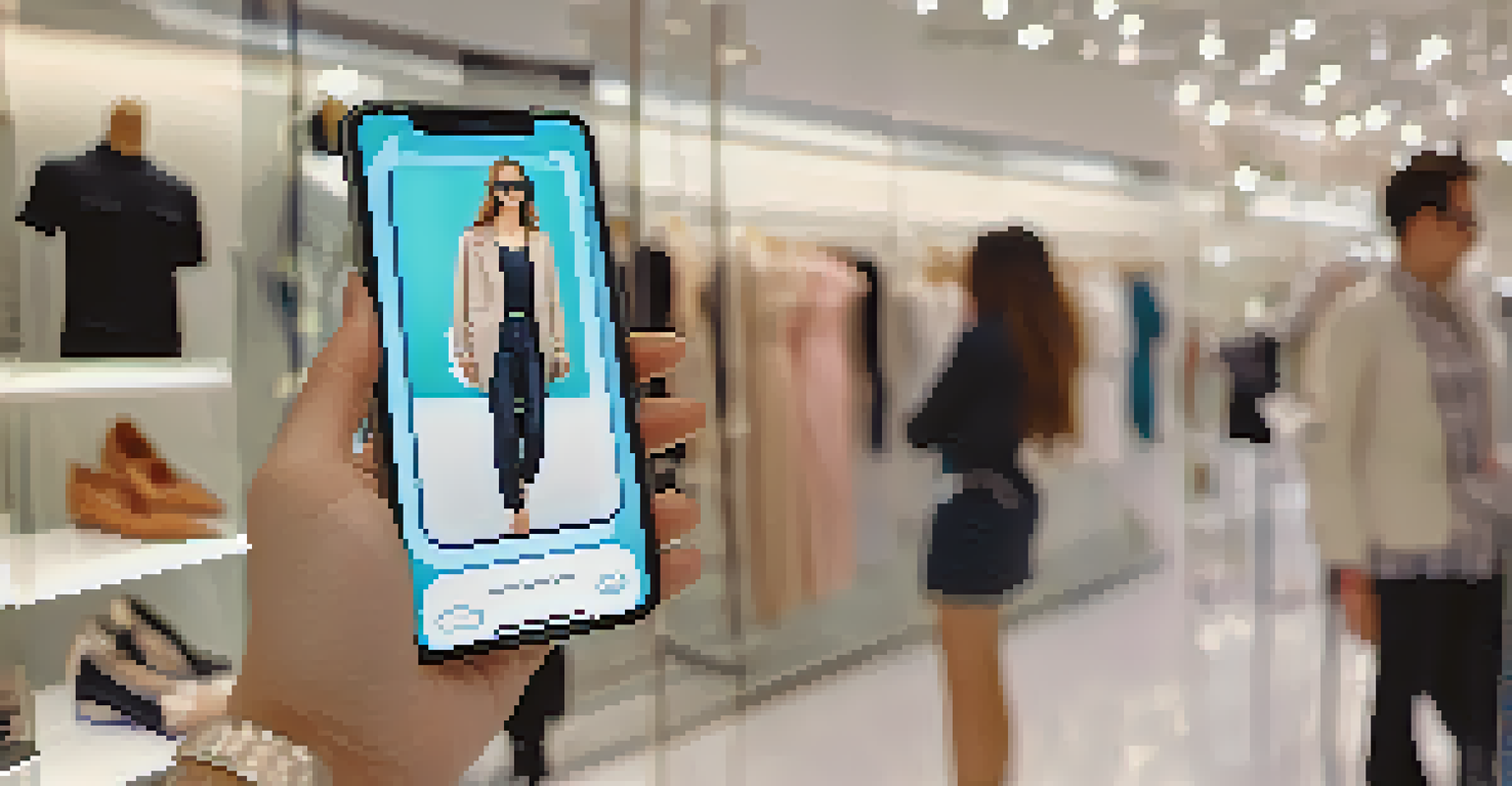How Augmented Reality Is Transforming Fashion Retail Experiences

Understanding Augmented Reality in Fashion Retail
Augmented Reality (AR) is more than just a buzzword; it's a technology that overlays digital information onto the real world. In fashion retail, this means customers can see how clothes or accessories look on them without trying them on physically. This blend of digital and physical experiences is changing how consumers interact with brands.
Augmented Reality is not just a tool; it's a bridge to a more interactive shopping experience.
Imagine walking into a store and using your smartphone to view a virtual fitting room. You can try on outfits right from your device, making shopping more efficient and fun. This technology not only attracts tech-savvy shoppers but also appeals to those who want to save time while shopping.
As AR continues to evolve, it's becoming crucial for retailers to understand its potential and how it can enhance customer experiences. The ability to visualize products in a personalized way encourages engagement and can ultimately lead to increased sales.
Enhancing Customer Engagement with Virtual Try-Ons
Virtual try-ons are a game-changer in the fashion retail landscape. They allow customers to see how clothing fits and looks on them without stepping into a fitting room. This immersive experience keeps shoppers engaged and creates a more personalized shopping journey.

For example, brands like Warby Parker have successfully integrated AR to let customers try on glasses virtually. This feature not only helps users make informed decisions but also adds an element of fun to the shopping process. The thrill of seeing yourself in different styles can make a significant difference.
AR Enhances Shopping Experience
Augmented Reality allows customers to visualize clothing and accessories on themselves, making shopping more engaging and efficient.
By providing this innovative experience, retailers can reduce return rates and enhance customer satisfaction. When customers feel confident about their purchases, they're more likely to become repeat buyers.
Bridging the Gap Between Online and In-Store Shopping
The rise of e-commerce has changed how consumers shop, but AR is helping to bridge the gap between online and physical retail. With AR apps, customers can visualize products in their own environment before making a purchase. This capability is particularly useful for items like clothing and accessories.
The future of retail is not just about selling products but creating meaningful experiences for consumers.
Consider a scenario where a customer is unsure if a dress will match their style. They can use AR to see how it looks on them or in their closet. This technology reduces uncertainty and can lead to more confident purchasing decisions.
As AR technology continues to improve, the line between online convenience and in-store experience becomes increasingly blurred. Retailers leveraging this technology are likely to attract more customers who value a seamless shopping experience.
Personalization: The Key to Customer Loyalty
Personalization is essential in today's retail environment, and AR can significantly enhance this aspect. By analyzing user data, retailers can provide tailored recommendations based on individual preferences. When customers feel like a brand understands them, loyalty often follows.
For instance, an AR app can suggest outfits based on previous purchases or browsing history. This level of personalization not only enhances the shopping experience but also fosters a deeper connection between the consumer and the brand.
Personalization Boosts Loyalty
By leveraging AR for tailored recommendations, retailers can foster deeper connections with customers, leading to increased retention.
Ultimately, personalized experiences lead to increased customer retention. When shoppers feel valued, they are more likely to return, making personalization a crucial strategy for retailers looking to thrive in a competitive market.
AR's Role in Sustainable Fashion Practices
As consumers become more environmentally conscious, AR offers a way to promote sustainable fashion practices. By allowing customers to visualize clothing fit and style digitally, retailers can reduce the number of items returned, which is a significant contributor to waste in the fashion industry.
For example, brands can utilize AR to showcase the lifecycle of a product, emphasizing sustainable materials and ethical production processes. This transparency helps build trust and encourages consumers to make more informed choices.
By integrating sustainability into the shopping experience, retailers not only appeal to eco-conscious consumers but also play a part in reducing environmental impact. This dual focus on innovation and responsibility can set brands apart in a crowded market.
Challenges and Limitations of AR in Fashion Retail
While the benefits of AR in fashion retail are abundant, there are challenges that retailers must navigate. One significant hurdle is the high cost of AR technology and the need for continuous updates to keep up with advancements. Smaller brands may find it difficult to invest in such technology.
Additionally, not all consumers are familiar with AR or comfortable using it. Retailers need to ensure that the technology is user-friendly and accessible to a broad audience. Providing clear instructions and support can help bridge this gap.
Sustainability Through AR
AR technology helps reduce fashion waste by enabling customers to make informed purchasing decisions, promoting sustainable practices.
As the technology matures, these challenges may diminish, but retailers must remain adaptable. Embracing AR requires a commitment to understanding both the technology and the consumers who will use it.
The Future of Fashion Retail with Augmented Reality
The future of fashion retail is undoubtedly intertwined with augmented reality. As technology continues to advance, we can expect even more innovative ways for retailers to engage with customers. From virtual fashion shows to interactive shopping experiences, the possibilities are limitless.
Imagine walking through a store where AR displays provide real-time information about products, or using a smart mirror that suggests complementary items as you try on clothes. Such experiences can redefine how consumers shop and interact with fashion brands.

Ultimately, the integration of AR in fashion retail is about creating memorable experiences. As retailers continue to explore this technology, we can look forward to a shopping landscape that's more engaging, personalized, and sustainable.